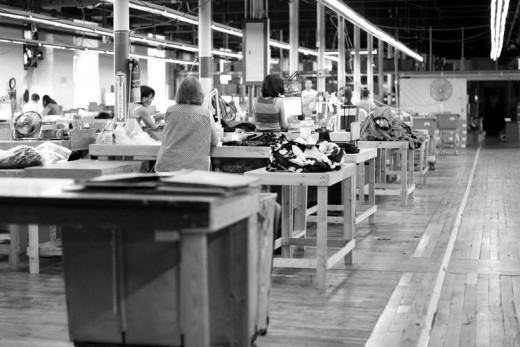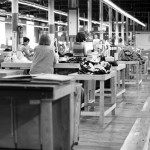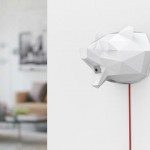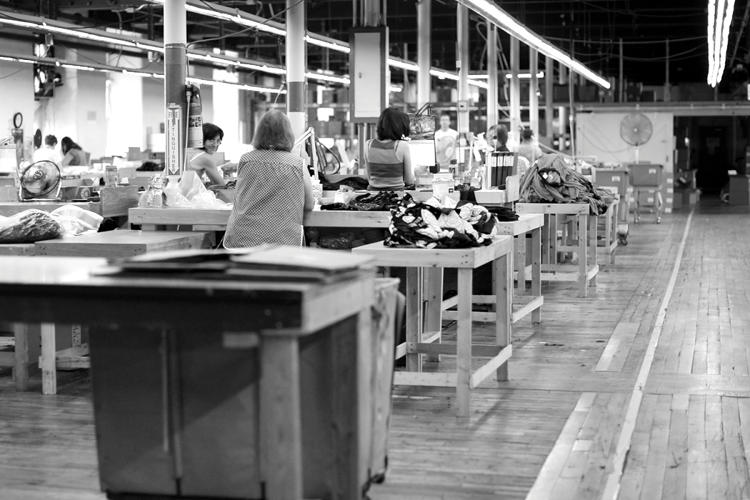Why apparel Startups Are Returning To American Factories
at the swanky Prudential middle in the heart of Boston’s purchasing district, the Yogasmoga boutique stands out for its sparse, minimalist aesthetic. at the entrance, there is a massive white orchid on a desk surrounded with the aid of neatly folded tank tops and yoga pants identified for his or her high-tech materials. Soothing, jap-impressed song is piped in, giving the space a peaceful ambiance.
Yogasmoga’s om-inducing clothes are made 60 miles south of Boston within the gritty town of Fall River, Massachusetts, where I not too long ago met with Yogasmoga’s founder and CEO Rishi Bali to seek advice from the manufacturing unit. within the nineteenth century, Fall River was a very powerful textile hub in New England, 2nd on the earth only to Manchester, England, on the subject of fabric manufacturing. Over the last few decades, however, the majority of factories in these parts were shuttered as manufacturing has moved offshore to places equivalent to China and Vietnam where labor is more cost effective.
At Griffin Manufacturing, a grand eight-story stone factory inbuilt 1936, this has-been manufacturing hub is exhibiting signs of existence. Three floors of this constructing are in manufacturing. whereas the factory is outfitted with state of the art machines—one, for example, is able to exactly laser-minimize stacks of material so that very little goes to waste—it can be surprising how a lot of every garment is made with the aid of hand.
At one station, a sewer named Lee Almeida is stitching a skinny layer of piping across the neckline and armholes of a shirt. She says Yogasmoga garments require extra center of attention as a result of activewear supplies tend to curl on the ends, so it’s more uncomplicated to make errors. I ask her how long she’s been sewing professionally. “Twenty-4 years,” she says, with out taking her eyes off the seam she is engaged on.

When Bali started his firm three years in the past, his resolution to manufacture locally wasn’t prompted basically by way of a want to convey back industry to death factories or to ensure that workers were being smartly handled. “in fact, as the CEO of a garb company, i am haunted through the photographs of the thousand garment staff who died when the Rana Plaza factory collapsed in Bangladesh,” he says. “i love knowing that that won’t occur right here. however it’s also proper that I simply couldn’t produce the garments i wanted to make overseas.” this is a sharp flip from an organization like American apparel, which opened in 1989, promoting its American-made merchandise as an alternative choice to those made in sweatshops in Asia.
Bali wished to create his personal technical materials, monitor quality, and have the flexibleness to scale up his trade as quick as imaginable. He believes the one method he used to be able to accomplish these targets used to be to arrange manufacturing in the U.S. And this resolution is paying off: ultimate year, the corporate had a valuation of $seventy four million and opened its twelfth store. “it might probably take 10 months to head from placing an order at a chinese manufacturing unit to receiving a shipment of clothes,” Bali says. “by means of the usage of native factories, i’m able to fulfill demand much quicker.”
high-Tech materials
Two years earlier than launching Yogasmoga, it happened to Bali that a big percentage of yogawear on the market is manufactured from nylon and spandex, each of that are very dated materials, invented by DuPont in 1938 and 1958, respectively. And although he had spent his career at Goldman Sachs and did not have a lick of cloth manufacturing expertise, he wished to peer precisely how exhausting it might be for him to enhance new supplies that would be top to wear for the follow of yoga.
That search led him to Invista, an organization spun-off with the aid of DuPont in 2003, which develops synthetic fibers. “It seems that whereas many firms are still the use of nylon in their clothes, there was an enormous amount of technological development in textiles,” Bali says. however, growing new fabrics is costly and requires quite a lot of time taking part with forte corporations like Invista, which is why it’s more straightforward to rely on existing artificial materials which can be considerable and cheap.

he is spent the previous few years working closely with Invista, checking out out how different mixtures of fibers feel and perform after they come collectively. Supplex, as an example, is an artificial fiber that manages to create the sensation of cotton, however has the brought benefits of wicking moisture, stretching, and now not pilling or losing its color when washed. Tactel, any other artificial fiber, is lightweight however extraordinarily durable, and it dries eight times quicker than cotton. Bali ultimately labored with scientists to create 30 different technical materials that use various combos of synthetic and natural fibers to create particular results—yoga pants that feel delicate as wool but that do not lure warmth, sports bras that feel like silk however can stretch, prints whose colors do not fade. “I felt like I needed to be deeply involved on this course of,” Bali says. “this is our mental property as a company.” (He now has a workforce of 5 in-home textile consultants who work with designers to enhance new fabrics for each and every season.)
Bali explains that it would were not possible to manufacture these clothes out of the country. Asian factories shouldn’t have had the infrastructure to provide these model new fabrics: Bali needed to source out a speciality mill in California to turn the Invista fibers into fabric. And on a common stage, conversation would have been a problem, particularly provided that Asian factories would never have encountered the fabrics he had just invented. If there were considerations with high quality, he would not have been able to identify them except too late, which might result in a lot of dear cloth going to waste.
Which brings us again to Lee Almeida, the sewer in the Fall River manufacturing facility. Bali has mentioned the specific traits of every cloth with the manufacturing unit manager who has, in flip, defined everything to the 40 workers, who all talk English. Almeida is totally aware about how highest to deal with Yogasmoga materials in the stitching process, even though it is solely new to her. She knows exactly how much tension to make use of as she stretches them out to stitch a hem. And Bali is able to check in on the manufacturing facility every month to ensure the quality of the final garments are as much as snuff.
The American-Made Tide Turns
Bali is a component of a nascent development of apparel startups bringing industry back to American factories. over the past twenty years, there used to be a 90% decline in apparel manufacturing trade in the U.S., from 940,000 jobs in 1990 to 136,000 in 2015. This has been partially as a result of the Trans-Pacific Partnerships, which provide incentives reminiscent of lower tariffs for companies that want to produce clothes out of the country—though the deserves of free alternate had been hotly contested in this election cycle.
just lately, however, something attention-grabbing has took place. “After a mass exodus of producing jobs out of the country, we stopped losing jobs in 2012—and local manufacturing commenced to stay secure,” says Bob Bland, founder and CEO of Manufacture the big apple, a company that helps fashion startups create their products in New York city. “that is the first victory for those of us committed to manufacturing in the community.”
part of this shift will also be attributed to the apparel startups that have started shifting back into American factories as an alternative of instinctively going overseas. Bland additionally believes that these numbers underestimate how a lot work is being executed within the U.S. as a result of many type designers and artisans aren’t being counted by using Bureau of Labor facts. “The maker movement has took place all the way through the last few years, and not all makers consider themselves industrial manufacturers,” she says.
For fledgling corporations, there are some benefits to beginning locally. while clothes price less per unit to manufacture in a foreign country, you want vital capital to even start production. this is what Sasha Koehn and Erik Schnakenberg discovered after they determined to launch the los angeles-primarily based menswear label Buck Mason in 2014. Their purpose was once to produce American-made fundamentals: simple T-shirts, denims, and button-downs. “We every put in $5,000 and located an area manufacturing unit in L.A. to make our first run of T-shirts,” Schnakenberg remembers. “That entire finances would had been eaten up on our plane ticket to China. but the way in which we did it, we had been able to design and sell our first merchandise.”
through promoting these initial merchandise online, they had been able to start out making others. through 12 months two, they have been pulling in several million bucks in gross sales and opening their first physical store. (they’re on to their 2nd retailer this year.) They admit that their margins are higher than they might be if they went in another country—however their margins should not too shabby, either. It costs them $sixteen to make a T-shirt that sells for $24. “we now have spent hardly ever any cash on marketing, relying instead on word of mouth to get our merchandise in the market,” he says. “This has cut down on our costs, and we now have nonetheless been able to develop exponentially.”
Kate Bowen and Ashley Wayman, the ladies who launched youngsters’s put on brand Petit Peony a 12 months and a half of ago, have a an identical experience. They explored native factories to look what the minimal order used to be to begin manufacturing. They ended up at Griffin, the same manufacturing facility that Yogasmoga uses, the place they just needed to purchase 1,000 gadgets in every print and size to steady a contract. This was once a long way extra manageable than overseas factories requiring orders in the tens of thousands.
The founders of those startups indubitably have fun with the ethical causes for manufacturing locally. “As a youngsters’s apparel company, we could not risk the likelihood that our garments can be made via underaged employees—kids, really—who had been being exploited,” Wayman says. Schnakenberg additionally points out that whereas manufacturing in the neighborhood permits him to seek advice from factories to check on high quality, it lets in him to ensure that workers are smartly treated and paid decently. “What now we have revealed is that the further the brand is from the manufacturing physically, the more difficult it’s to control it and make sure that there is an ethical process in position,” he says. “once we approached this from an idealistic, but also entrepreneurial standpoint, we revealed that it is definitely that you can imagine to have a successful business while making clothes right here in the usa. we will create jobs while also making a thriving and good industry.”
Can American-Made Go Mainstream?
while small startups are discovering some fast benefits to developing products in native factories, manufacturing within the U.S. can handiest start to compete with in another country manufacturing relating to quality, velocity to market, and even value, when they’re able to scale up. One excellent example of that is American giant, a 4-12 months old firm based by Bayard Winthrop, known for growing durable American-made sweatshirts that have garnered a cult following.
Winthrop has seen that whereas manufacturing in a foreign country drives down labor prices, it also requires firms to mark up their merchandise as a result of a significant chunk of their inventory won’t ever get bought—some merchandise will likely be discarded as a result of negative quality, gradual turnaround time implies that some garments will not be stylish once they attain outlets, and designers incessantly make bad bets on coloration schemes or patterns and don’t seem to be able to withdraw orders.
He makes the case that after a company is huge enough to begin investing in a U.S.- primarily based supply chain, it might lower down on this waste and keep costs reasonably priced for customers. For his part, Winthrop has just lately moved the vast majority of yank massive production to North and South Carolina. “after getting scale, which you can keep an eye on and mitigate inventory risks dramatically, permitting you to charge a a lot fairer retail value,” Winthrop says. “You start to free up a variety of large picture efficiencies that, we would argue, are beginning to reset assumptions in the business concerning the competitiveness and effectiveness of american-made merchandise.”
American-made merchandise will never be as cheap as the $three T-shirts offered at H&M or Primark, the British fast-model retailer that has not too long ago arrived within the U.S. American giant sweatshirts price around $ninety, which places them on par with those at Banana Republic or J.Crew. then again, CEOs who make products in the community argue that customers are getting much better worth. “whilst you believe weight, quality, development, and hardware, i don’t assume lets do this extra cheaply if we were making it in China,” Winthrop says. Bali, whose yoga pants commence at $eighty four, makes a an identical argument. “whereas our prices are on par with our rivals who make their merchandise in Asia, our consumer is getting a sophisticated product in relation to quality and supplies,” he says.

after all, now not all startups are able to grow as quick as American large and Yogasmoga, and due to this fact take advantage of the industrial efficiencies that happen at such a massive scale. this is the place Manufacture the big apple hopes to make a difference. primarily based in a manufacturing facility in Brooklyn, the organization helps up-and-coming designers have in mind the production process and tap into a neighborhood provide chain. Designers work alongside engineers, cloth consultants, sewers, and other manufacturing experts to find tips on how to create products at reasonable costs. Manufacture new york has already launched greater than 90 labels that are ready to take advantage of the dimensions that Winthrop is talking about.
companies dedicated to manufacturing in the community are innovating on the stage of cloth and design, but they also should be ingenious when it comes to the whole provide chain. for instance, Manufacture the big apple’s Bland is raring to be able to beef up the method of choosing out garments in a warehouse and packing them when a purchaser makes an order. this is a laborious process that’s still largely completed by means of hand, but she believes it may be automatic. Bali and Winthrop spend their days cracking logistical puzzles like how to shave off minutes on transporting fabrics from mills to factories or how you can maximize every swath of cloth when reducing garb patterns.
while there are many challenges with making products within the U.S., finding options to those hard issues can be what appears to make these firms tick. “Is there an ethical calling? i do not think there’s. Jobs in Shenzhen [China] are just as essential to the households in Shenzhen as they’re to American households,” Winthrop says. “but there’s something cool about the truth that American-made apparel companies are disproving what we have now been told for the final 40 years about how American manufacturing is useless.”
<img alt="
Yogasmoga’s om-inducing clothes are made 60 miles south of Boston in the gritty town of Fall River, Massachusetts.
” src=”http://c.fastcompany.internet/multisite_files/fastcompany/imagecache/slideshow_large/slideshow/2016/03/3057738-slide-s-1-why-clothing-startups-are-returning-to-american-factories.jpg”>
<img alt="
within the nineteenth century, Fall River was an important fabric hub in New England, 2d on the earth best to Manchester, England, in fabric manufacturing.
” src=”http://b.fastcompany.net/multisite_files/fastcompany/imagecache/slideshow_large/slideshow/2016/03/3057738-slide-s-17-why-clothing-startups-are-returning-to-american-factories.jpg”>
<img alt="
Over the previous couple of many years, on the other hand, the vast majority of factories in these components have been shuttered.
” src=”http://a.fastcompany.internet/multisite_files/fastcompany/imagecache/slideshow_large/slideshow/2016/03/3057738-slide-s-sixteen-why-apparel-startups-are-returning-to-american-factories.jpg”>
<img alt="
Yogasmoga’s founder needed to create his personal technical fabrics, reveal high quality, and have the pliability to scale up his trade speedy.
” src=”http://d.fastcompany.net/multisite_files/fastcompany/imagecache/slideshow_large/slideshow/2016/03/3057738-slide-s-4-why-clothing-startups-are-returning-to-american-factories.jpg”>
<img alt="
He believes the only approach he used to be able to accomplish these objectives was to set up production in the U.S.
” src=”http://c.fastcompany.net/multisite_files/fastcompany/imagecache/slideshow_large/slideshow/2016/03/3057738-slide-s-9-why-apparel-startups-are-returning-to-american-factories.jpg”>
<img alt="
And this resolution is paying off. ultimate 12 months, the corporate had a valuation of $78 million and opened its twelfth store.
” src=”http://c.fastcompany.web/multisite_files/fastcompany/imagecache/slideshow_large/slideshow/2016/03/3057738-slide-s-14-why-apparel-startups-are-returning-to-american-factories.jpg”>
<img alt="
click through for extra pictures of the Griffin Manufacturing fabric services and Yogasmoga.
” src=”http://d.fastcompany.web/multisite_files/fastcompany/imagecache/slideshow_large/slideshow/2016/03/3057738-slide-s-eight-why-garb-startups-are-returning-to-american-factories.jpg”>
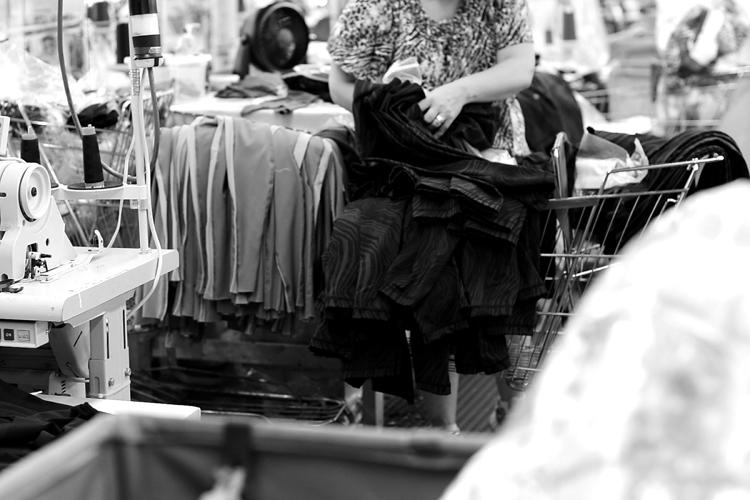
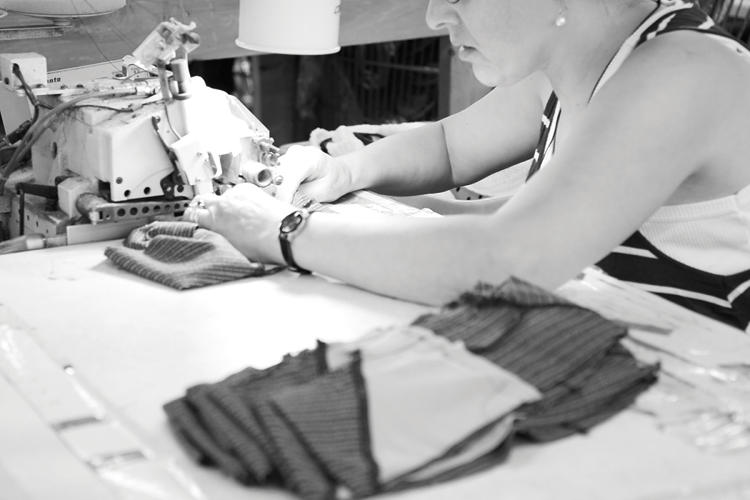
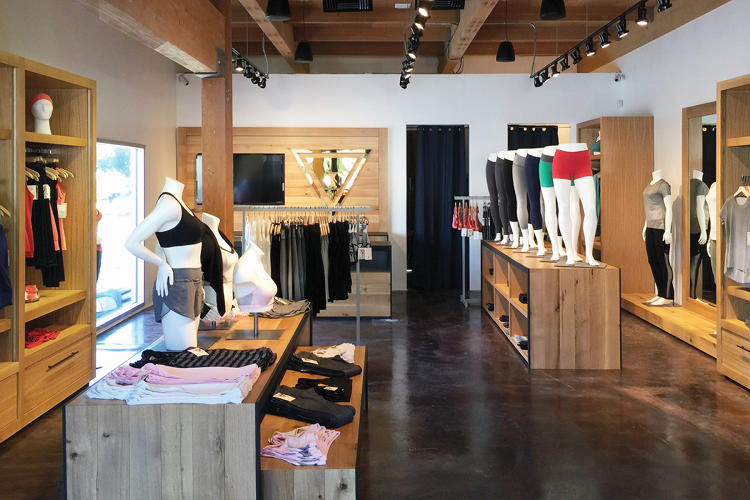

(58)

